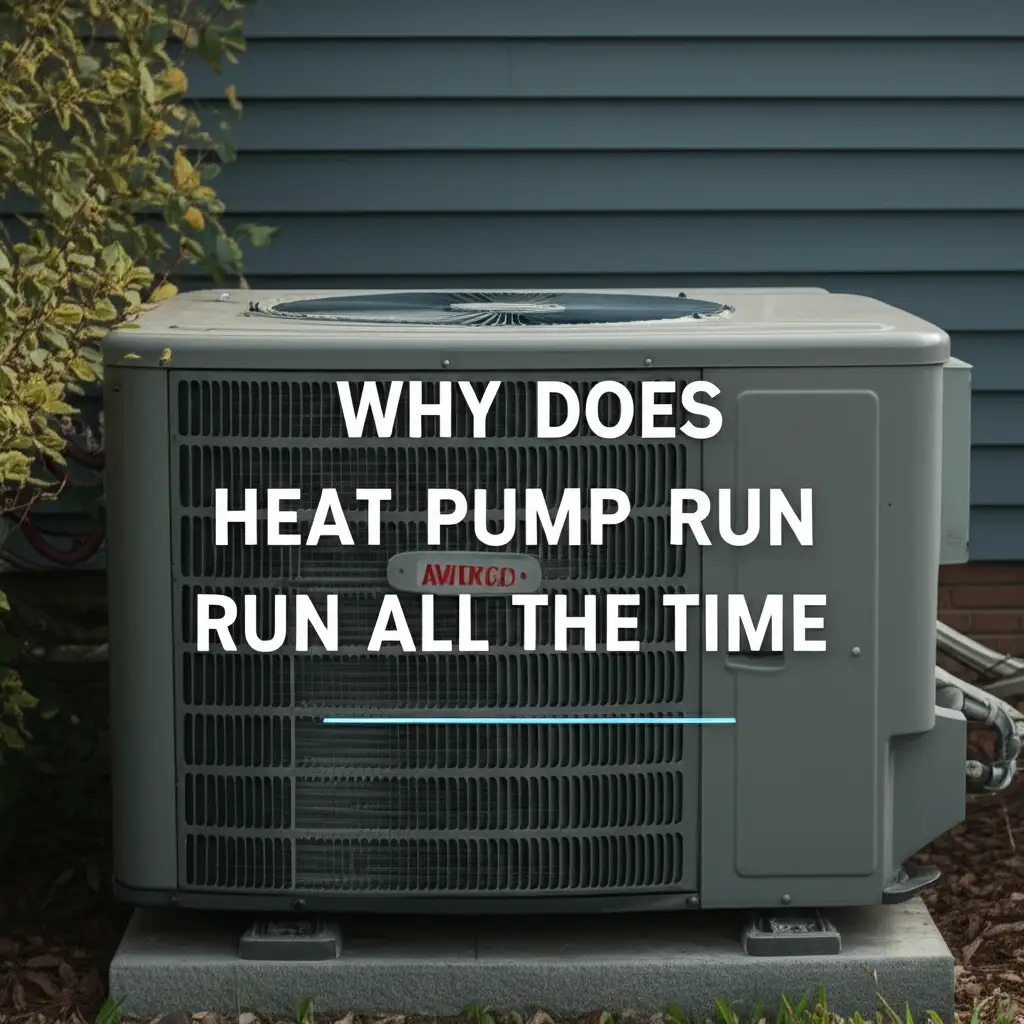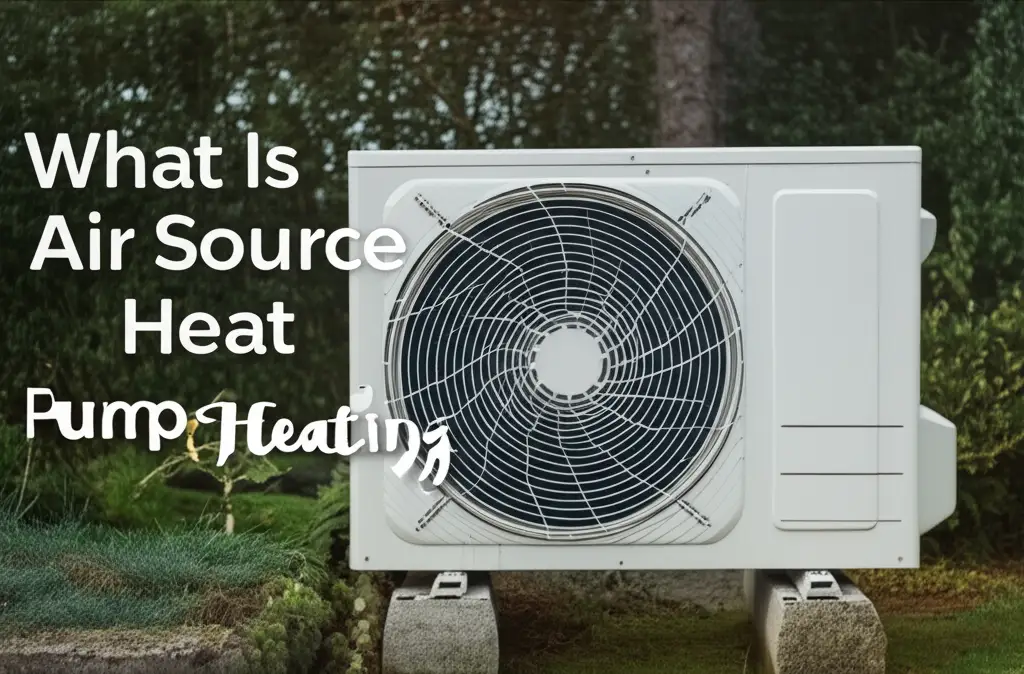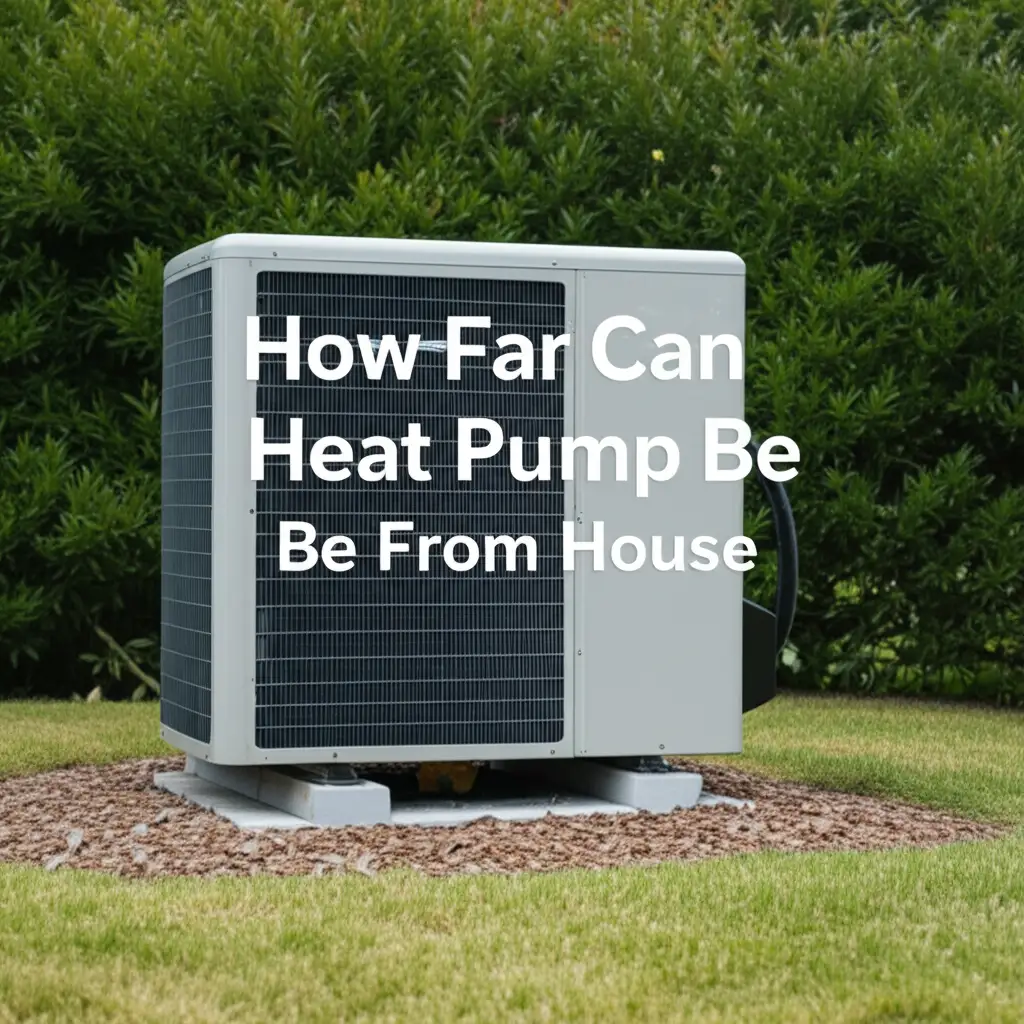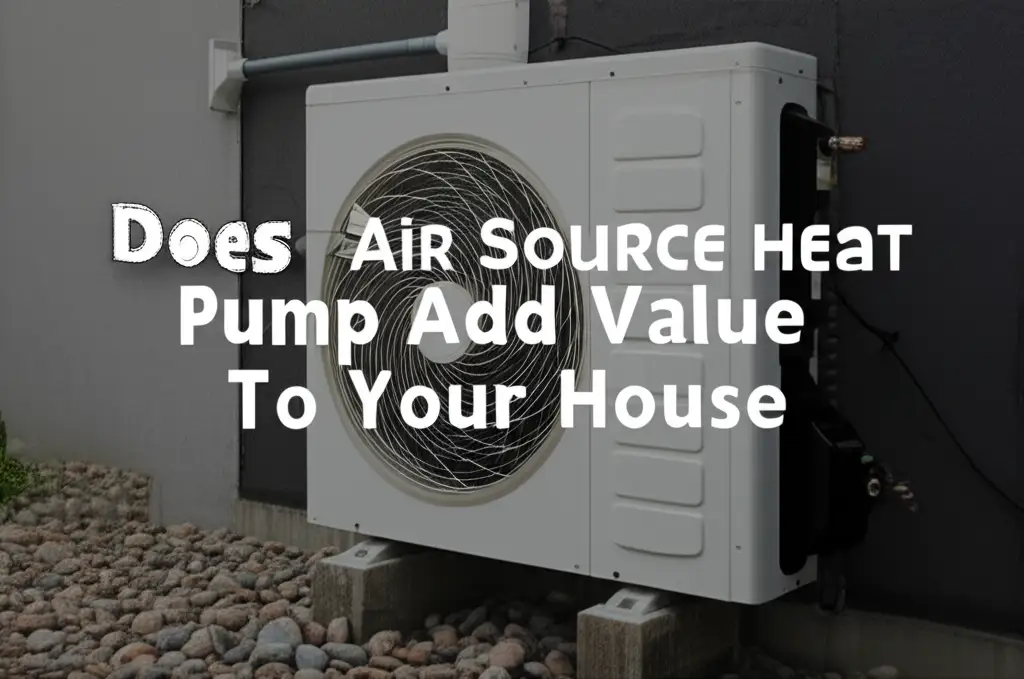· Todd Martin · Home Improvement · 15 min read
How To Add Heat Pump To Gas Furnace
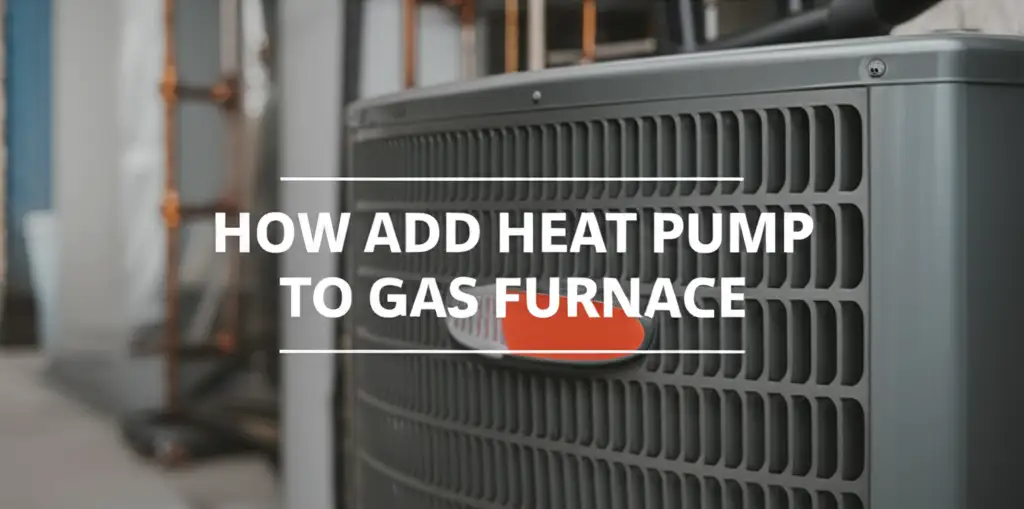
Unlocking Hybrid Comfort: How to Add a Heat Pump to Your Gas Furnace
Imagine a heating and cooling system that offers both incredible energy efficiency and reliable warmth, even on the coldest days. This ideal scenario is possible when you add a heat pump to your existing gas furnace. This combination creates a “dual-fuel” or “hybrid” HVAC system. It is a smart upgrade many homeowners consider to lower utility bills and reduce their carbon footprint.
My journey into home comfort improvements often involves finding smart, sustainable solutions. I have learned that integrating a heat pump with a gas furnace provides efficiency during milder weather and powerful heating when temperatures drop. This setup ensures your home stays comfortable year-round. This article will explain the many benefits of this system. We will also walk through the process of adding a heat pump to your gas furnace. You will learn about key considerations, costs, and the steps involved to make this upgrade a reality for your home.
Takeaway
Integrating a heat pump with your gas furnace creates a powerful dual-fuel system. This system balances efficiency and robust heating.
- Heat pumps offer highly efficient heating and cooling for most of the year.
- Gas furnaces provide powerful, reliable warmth during extreme cold.
- This hybrid setup reduces energy consumption and lowers utility costs.
- Proper planning, sizing, and professional installation are essential for optimal performance.
Clear, Concise Answer
You can add a heat pump to a gas furnace by installing an outdoor heat pump unit and an indoor coil. This setup connects to your existing furnace and ductwork. A smart thermostat controls which system runs based on outdoor temperatures and efficiency.
Why Combine a Heat Pump with a Gas Furnace?
Many homeowners wonder why they should combine a heat pump with a gas furnace. The answer lies in achieving optimal home comfort and significant energy savings. This combination creates a dual-fuel system. It intelligently switches between the most efficient heating source for current outdoor conditions.
Heat pumps operate by moving heat, not creating it. In cooler weather, they extract heat from the outside air and transfer it inside. In warmer weather, they reverse the process, moving heat from inside your home to the outdoors. This method is incredibly efficient. It uses electricity to move heat rather than burning fuel. When temperatures drop very low, typically below freezing, the heat pump’s efficiency decreases. This is where the gas furnace becomes valuable.
A gas furnace produces heat by burning natural gas. It can generate intense heat quickly, regardless of how cold it is outside. This makes it ideal for harsh winter conditions. By combining the two, you get the best of both worlds. The heat pump handles heating and cooling during moderate temperatures. The gas furnace takes over when the heat pump becomes less efficient. This setup reduces your overall energy consumption. This leads to lower monthly utility bills, especially if you live in an area with fluctuating temperatures. Many people find their homes feel more comfortable with this balanced system. It maintains consistent temperatures without excessive energy use. You gain efficiency and reliable warmth.
Understanding the Dual-Fuel System Components
To add a heat pump to your gas furnace, you need to understand the main parts of a dual-fuel system. These components work together to provide efficient heating and cooling. This system uses both electricity and natural gas to maintain comfort in your home.
First, you have your existing gas furnace. This unit provides powerful heat, especially in very cold weather. It also moves air through your home’s ductwork for both heating and cooling. The furnace remains a central part of the dual-fuel setup. It acts as the primary heat source when the heat pump’s efficiency drops.
Next, you add the heat pump itself. This includes an outdoor unit, similar to an air conditioner. The outdoor unit contains a compressor and coils. It moves heat into or out of your home depending on the season. An indoor coil, also called an evaporator coil, is installed within your existing furnace’s air handler or ductwork. This coil is where the heat exchange happens indoors. It cools the air in summer and helps warm it in winter. The heat pump uses refrigerant to transfer heat between the indoor and outdoor coils.
Finally, a smart thermostat is crucial for a dual-fuel system. This specialized thermostat manages when each heating source operates. It monitors the outdoor temperature. It automatically switches between the heat pump and the gas furnace. This ensures the most energy-efficient option runs at all times. For example, when temperatures are mild, the thermostat will activate the heat pump. If the temperature falls below a set point, known as the “balance point,” the thermostat will switch to the gas furnace. This automation makes the system very easy to use. Understanding these components helps you grasp how this powerful heating solution works.
Key Considerations Before Adding a Heat Pump
Before you decide to add a heat pump to your existing gas furnace, there are several important factors to consider. Taking time to assess these points ensures a smooth installation and optimal system performance. This planning phase is crucial for success.
First, evaluate your home’s existing ductwork. A heat pump relies on efficient air distribution. Your ducts must be in good condition and properly sized. Leaky or undersized ducts can reduce efficiency and comfort. An HVAC professional can inspect your current ductwork for suitability. They will recommend any necessary repairs or modifications. Sometimes, older homes may need significant duct upgrades.
Second, think about your climate. While heat pumps work well in many regions, their efficiency decreases in extremely cold temperatures. Determine the average winter temperatures in your area. Your HVAC professional will help set the “balance point” for your dual-fuel system. This is the temperature at which your heat pump becomes less efficient and your gas furnace takes over. Knowing this helps optimize energy savings.
Third, consider the electrical capacity of your home. Heat pumps require a dedicated circuit. Ensure your electrical panel can support the additional load. An electrician may need to upgrade your electrical service. This is a vital step to avoid issues after installation. Getting this checked early prevents delays.
Finally, research available rebates and incentives. Many local, state, and federal programs offer financial help for installing energy-efficient systems like heat pumps. These incentives can significantly offset the initial cost. Check with your utility company and government websites for eligibility. Taking these steps helps prepare your home for this valuable upgrade.
The Step-by-Step Process of Adding a Heat Pump
Adding a heat pump to an existing gas furnace is a significant home improvement project. It requires skilled professionals to ensure proper installation and optimal performance. Understanding the general steps can help you prepare for the process. This knowledge gives you peace of mind.
The first step involves a professional assessment of your home and existing HVAC system. An HVAC technician will inspect your current furnace, ductwork, and electrical panel. They will assess your home’s size, insulation, and window quality. This assessment helps determine the correct heat pump size. They will also confirm compatibility with your furnace. This ensures the new system will meet your heating and cooling needs efficiently. Choosing the right size heat pump is crucial for performance and energy savings. You can learn more about sizing a heat pump by visiting how to tell what size heat pump you have.
Next, the installation team prepares the site. This involves laying a concrete pad for the outdoor heat pump unit. They also run new refrigerant lines and electrical wiring between the outdoor unit and your furnace. They might need to adjust or install new ductwork if your existing setup is not adequate. Proper placement of the outdoor unit is important for its efficiency and lifespan.
Then, the indoor components are installed. An evaporator coil is placed inside your furnace’s plenum, which is the box that connects to your ductwork. This coil is essential for the heat pump’s operation. It works with the outdoor unit to exchange heat. New electrical connections are made. The refrigerant lines are connected to both the indoor coil and outdoor unit.
Finally, the new smart thermostat is installed and configured. This is a critical step because the thermostat controls the entire dual-fuel system. It determines when to switch between the heat pump and the gas furnace based on outdoor temperatures. The technicians will test the system thoroughly to ensure all components are working correctly. They will also calibrate the thermostat for peak efficiency. They will check refrigerant levels and airflow. This meticulous testing guarantees your new hybrid system runs perfectly.
Sizing and Compatibility for Your Hybrid HVAC
Proper sizing and compatibility are crucial when adding a heat pump to your gas furnace. An incorrectly sized system will not operate efficiently. It can lead to discomfort and higher energy bills. Taking the time to get this right pays off in the long run.
Heat pumps are rated in BTUs (British Thermal Units) or tons. One ton equals 12,000 BTUs per hour. The size needed for your home depends on various factors. These include the square footage of your living space, the quality of your home’s insulation, the number and type of windows, and your local climate. A certified HVAC professional performs a “load calculation” to determine the precise size. This calculation considers heat loss in winter and heat gain in summer. It ensures the heat pump can effectively heat and cool your home without overworking or underperforming.
Compatibility between the new heat pump and your existing gas furnace is another vital aspect. Not all heat pumps pair perfectly with every furnace. The fan motor in your furnace must be able to handle the airflow requirements of the heat pump. Modern furnaces often have variable-speed blowers. These work well with heat pumps. Older furnaces might need an upgrade to their blower motor. The furnace control board must also be compatible with the heat pump’s control system. This ensures seamless switching between the two heating sources.
A professional HVAC technician will assess your current furnace for compatibility. They will recommend specific heat pump models that integrate well. They will also check if your existing ductwork can handle the airflow from the combined system. Sometimes, minor duct modifications might be necessary. Ensuring proper sizing and compatibility from the start prevents operational issues. It helps maximize the energy efficiency and longevity of your new hybrid HVAC system.
Costs, Savings, and Incentives for Your Upgrade
Investing in a dual-fuel system by adding a heat pump to your gas furnace involves an upfront cost. However, it also brings significant long-term savings and potential financial incentives. Understanding these aspects helps you make an informed decision.
The initial cost to add a heat pump to an existing gas furnace can vary widely. Factors like the heat pump’s size, efficiency rating, brand, and the complexity of installation influence the price. On average, you might expect to pay between $4,000 and $10,000 for the heat pump unit and professional installation. This cost includes the outdoor unit, indoor coil, refrigerant lines, electrical work, and thermostat installation. Any necessary ductwork modifications or electrical panel upgrades would add to this total. Getting multiple quotes from reputable HVAC contractors is always a good idea.
Despite the initial investment, the long-term energy savings are substantial. Heat pumps are far more efficient than gas furnaces for much of the year. They operate by moving heat, consuming less energy than systems that generate heat. You will primarily use your heat pump for heating during milder weather, and for all your cooling needs. The gas furnace only kicks in when temperatures drop significantly, saving on natural gas consumption. Many homeowners see a reduction in their overall utility bills. This is especially true if electricity rates are favorable compared to natural gas prices. For example, comparing heat pump operating costs to other systems can show significant savings. You can explore how a heat pump might be cheaper to run than an electric furnace by visiting is heat pump cheaper to run than electric furnace.
Furthermore, numerous incentives and rebates can help offset the cost. Federal tax credits, such as those available through the Inflation Reduction Act, offer significant savings for installing high-efficiency heat pumps. Many states, local municipalities, and utility companies also provide rebates or low-interest loans. These programs aim to encourage energy-efficient upgrades. Be sure to research what incentives are available in your area before starting the project. These financial aids can make adding a heat pump to your gas furnace a more affordable upgrade. It also increases your home’s value. Air source heat pumps can add value to your house; learn more at does air source heat pump add value to your house.
Maintaining Your Hybrid Heating System
Once you add a heat pump to your gas furnace, proper maintenance becomes key to ensuring its longevity and efficient operation. A well-maintained dual-fuel system will provide reliable comfort for many years. Neglecting maintenance can lead to reduced efficiency and costly repairs.
Regular professional maintenance is essential. Schedule annual check-ups for both your heat pump and your gas furnace. An HVAC technician will inspect all components of both systems. For the heat pump, they will clean coils, check refrigerant levels, and inspect electrical connections. They will also ensure the outdoor unit is free of debris. Cleaning the heat pump coils is a common maintenance task; learn how to do it at how to clean heat pump coils. For the furnace, they will clean burners, check for gas leaks, and inspect the heat exchanger. These check-ups help catch minor issues before they become major problems.
Beyond professional service, there are several simple tasks you can perform yourself. Replace or clean your furnace air filter regularly, at least every 1-3 months. A dirty filter restricts airflow, forcing your system to work harder. This reduces efficiency and can damage components. Regularly cleaning your furnace filter is a simple yet effective maintenance step; you can find instructions at how to clean furnace filter.
Keep the outdoor heat pump unit clear of obstructions. Remove leaves, dirt, and snow from around the unit. Ensure there is at least two feet of clear space around it for proper airflow. This helps prevent the unit from freezing up in winter and ensures efficient operation. You can learn more about preventing freezing by visiting how to keep your heat pump from freezing up.
Finally, pay attention to how your system is operating. Unusual noises, strange smells, or a sudden decrease in comfort are signs of a problem. Do not ignore these indicators. For example, if your heat pump cycles on and off frequently, it might indicate an issue. You can read about reasons why a heat pump might keep turning on and off at why does heat pump keep turning on and off. Address any issues promptly by contacting a qualified HVAC technician. Proactive maintenance and quick response to problems will keep your hybrid system running smoothly for years.
Frequently Asked Questions
Q1: Can I add a heat pump to any existing gas furnace? A1: Not all gas furnaces are compatible with a heat pump. Your furnace’s blower motor and control board must be able to integrate with the heat pump. Newer furnaces often offer better compatibility. An HVAC professional will assess your current system. They will recommend if an upgrade is feasible or if you need furnace modifications.
Q2: What is the “balance point” in a dual-fuel system? A2: The “balance point” is an outdoor temperature set by your HVAC technician. Below this temperature, the heat pump becomes less efficient than the gas furnace. The smart thermostat automatically switches from the heat pump to the gas furnace when the outdoor temperature drops below this set point.
Q3: How long does it take to install a heat pump with a gas furnace? A3: The installation process typically takes one to three days. This includes setting the outdoor unit, installing the indoor coil, running refrigerant lines, and connecting electrical components. The exact time depends on the complexity of your home’s setup and any necessary ductwork or electrical upgrades.
Q4: Will adding a heat pump increase my home’s value? A4: Yes, adding a high-efficiency heat pump to your home can increase its value. Buyers often seek homes with modern, energy-efficient HVAC systems. The long-term savings on utility bills and reduced carbon footprint are attractive features. This upgrade is seen as a valuable investment.
Q5: What are the main benefits of a dual-fuel system? A5: The main benefits include significant energy savings during milder weather due to the heat pump’s efficiency. You also gain reliable, powerful heating from the gas furnace during extreme cold. This system offers year-round comfort, lower utility bills, and a reduced environmental impact compared to using only a furnace.
Q6: Do I need to replace my thermostat when adding a heat pump? A6: Yes, you will need a specialized dual-fuel compatible thermostat. This smart thermostat manages the automatic switching between the heat pump and the gas furnace based on outdoor temperatures. It ensures your system always uses the most efficient heating source for current conditions.
Conclusion
Adding a heat pump to your gas furnace creates a powerful dual-fuel system. This smart upgrade brings together the best attributes of both technologies. You get the incredible energy efficiency of a heat pump for most of the year. You also keep the robust heating power of your gas furnace for the coldest days. This means year-round comfort and significant savings on your utility bills.
My experience shows that investing in such an upgrade is a wise decision for any homeowner. It reduces your environmental footprint while enhancing your home’s value and comfort. Remember, proper planning, professional installation, and regular maintenance are crucial for success. If you are ready to enjoy more efficient heating and cooling, contact a qualified HVAC professional today. Ask them to assess your home and help you add a heat pump to your gas furnace. Your comfortable and energy-efficient future starts now.


